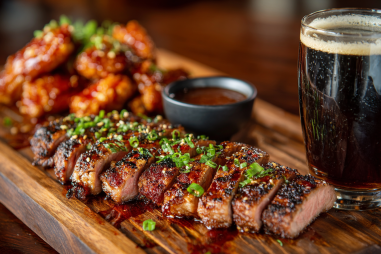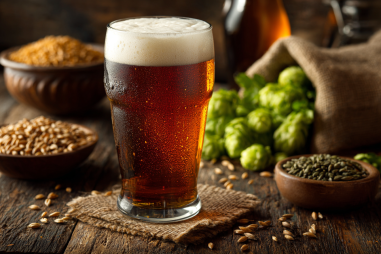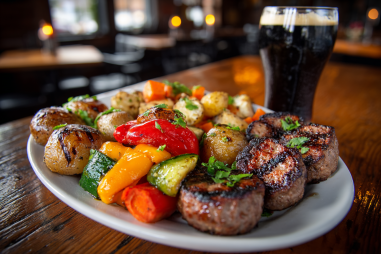American Strong Ale is a beer style that captures the imagination of many craft beer enthusiasts with its robust flavors and bold character. This style’s rich history reflects a vibrant interplay between traditional brewing influences and innovative American creativity. From its roots in British strong ales to its rise through the craft beer revolution, American Strong Ale remains a dynamic and evolving favorite among brewers and consumers alike. Let’s dive into the story behind this captivating beer style and explore how it has developed and thrived.
Origins of Strong Ales in America
The origins of strong ales in America can be traced back to early colonial times, when settlers brought their brewing traditions from Europe. Strong ales were valued for their higher alcohol content and richer flavors compared to everyday table beers. Early American brewers, adapting to local ingredients and conditions, began producing stronger, malt-forward beers that were hearty and well-suited to the demanding lifestyles of the time.
During the 18th and 19th centuries, strong ales in America were not as standardized as they are today, often reflecting whatever grain, hops, and yeast were available. Yet, the appeal of a beer with depth and warmth endured, especially in colder regions where a stronger beer was welcome for its comforting effects.
Influence of British Strong Ale Styles
The British strong ale styles had a significant influence on early American strong ales. Beers such as Old Ale, Barleywine, and Robust Porter served as important templates. These styles are known for their higher alcohol, pronounced malt sweetness, and complexity arising from barrel aging or extended conditioning. British brewers had long mastered the art of balancing strength with drinkability, and American brewers borrowed heavily from these traditions.
For example, Barleywine, with its rich and intense profile, became a benchmark style. American brewers often interpreted these styles with a twist—introducing American hops and experimenting with different yeast strains. This cross-cultural influence laid the groundwork for what would eventually become known as American Strong Ale, a category that embraces boldness but celebrates innovation.
Rise of Craft Brewing and Its Impact
The modern story of American Strong Ale really begins with the craft brewing revolution that took hold in the late 20th century. The surge of small, independent breweries brought a fresh enthusiasm for diverse beer styles and a willingness to push boundaries. American brewers were no longer just replicating European styles; they sought to create distinctive beers that spoke to their own terroir and tastes.
During the 1980s and 1990s, many pioneering craft breweries started crafting stronger, more flavorful ales that broke away from the mass-produced lagers dominating the market. These strong ales varied widely but often shared a commitment to complexity, layering malt sweetness with assertive hop character and sometimes experimental yeast profiles.
This era saw the emergence of signature American Strong Ales that combined the best of British style foundations with American ingenuity. The style became a playground for brewers who were unafraid to embrace boldness and big flavors. This movement not only raised the profile of American Strong Ale but also helped popularize higher ABV beers among consumers.
Major Milestones in American Strong Ale Development
Several key milestones mark the journey of American Strong Ale from niche curiosity to a respected style category:
- Introduction of Barleywines and Old Ales: Early American breweries brewed these more robust versions heavily influenced by British recipes but adjusted with American ingredients, setting the stage for the style’s growth.
- 1990s Craft Beer Boom: Breweries like Sierra Nevada and Anchor Brewing popularized stronger ales with innovative approaches, introducing broader audiences to the possibilities of higher-ABV beers.
- Specialty Aging Programs: The development of barrel-aged variants infused American Strong Ales with new dimensions of flavor, incorporating bourbon, wine, and other spirit barrel influences.
- Formal Style Recognition: Organizations such as the BJCP (Beer Judge Certification Program) and the Brewers Association began formally defining the style in guidelines, elevating American Strong Ale to a clearly recognized beer category.
- Continued Experimentation: The 21st century saw brewers pushing the envelope with adjuncts, wild fermentations, and blending techniques, keeping the style fresh and exciting.
How Consumer Preferences Shaped the Style
The evolution of American Strong Ale has been deeply influenced by changing consumer preferences. Early drinkers appreciated strong ales for their warming qualities and complexity. As craft beer grew in popularity, more adventurous consumers emerged who craved diverse flavor profiles and unique experiences.
Consumers began to value balance alongside strength. While the alcohol content remained high, there was an increasing demand for beers that showcased harmony between malt sweetness, hop bitterness, and fermentation character. This led brewers to refine recipes, focusing on drinkability without compromising on intensity.
Flavor exploration also became important. Drinkers embraced barrel-aged variants, fruit-infused versions, and more hop-forward interpretations of American Strong Ale. The desire for both tradition and innovation encouraged brewers to continuously experiment, cultivating a style that caters to a wide range of palates.
Current Trends and the Future Outlook
Today, American Strong Ale is more vibrant and diverse than ever. Some of the most exciting trends include:
- Barrel Aging and Blending: Continuing popularity of bourbon, wine, and rum barrel-aged strong ales with subtle blending techniques to create complex flavor layers.
- Hybrid Styles: Brewers mixing characteristics from IPAs, stouts, and saisons into their strong ales to craft hybrid profiles that appeal to niche markets.
- Lower ABV Strong Ales: A movement towards slightly reduced alcohol versions that retain rich flavor but offer more approachability and sessionability.
- Wild and Sour Variants: Integration of wild yeasts and lactobacillus to create sour or funky strong ales that add new dimensions to the style.
- Focus on Local Ingredients: Emphasis on regionally grown malts, hops, and adjuncts to create terroir-driven expressions of strong ale.
The future of American Strong Ale looks promising as brewers continue to blend tradition with innovation. The style’s versatility and adaptability ensure it will remain a favorite canvas for creativity in the craft beer world.
Appreciating the Heritage of American Strong Ale
Understanding the history and evolution of American Strong Ale enriches the experience of enjoying this compelling beer style. From its colonial roots through British influences, craft brewing breakthroughs, and contemporary experimentation, American Strong Ale embodies a rich tapestry of brewing culture. It reflects not just a style but also the spirit of American ingenuity and passion for bold flavors.
Whether savoring a luscious barleywine, a robust old ale, or a modern barrel-aged masterpiece, drinkers are partaking in a grand tradition that merges the old with the new. As the style continues to grow and evolve, American Strong Ale remains a powerful testament to the creativity and resilience of American craft brewers and the adventurous palates of their fans.







